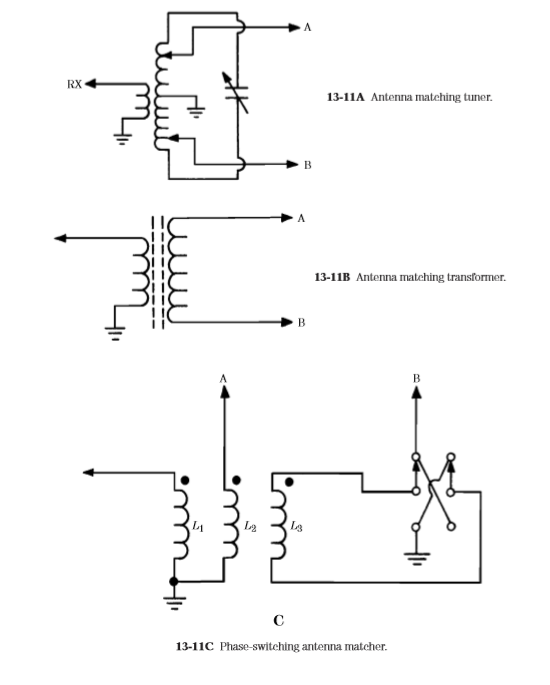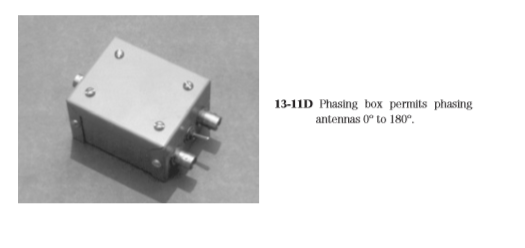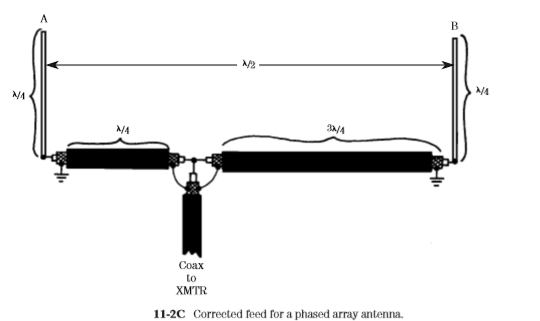Lambda/2 large loops
The performance of large wire loop antennas depends in part on their size. Figure 14-1 shows a half-wavelength loop (i.e., one in which the four sides are each /8 long). There are two basic configurations for this antenna: continuous (S1 closed) and open (S1 open). In both cases, the feedpoint is at the midpoint of the side opposite the switch. The direction of the main reception, or radiation lobe (i.e., the direction of maximum reception), depends on whether S1 is open or closed. With S1 closed, the main lobe is to the right (solid arrow); and with S1open, it is to the left (broken arrow). Direction reversal can be achieved by using a switch (or relay) at S1, although some people opt for unidirectional operation by eliminating S1, and leaving the loop either open or closed. The feedpoint impedance is considerably different in the two configurations. In the closed-loop situation (i.e., S1 closed), the antenna can be modeled as if it were a half-wavelength dipole bent into a square and fed at the ends. The feedpoint (X1 X2) impedance is on the order of 3 kΩ because it occurs at a voltage antinode (current node). The current antinode (i.e., Imax) is at S1, on the side opposite the feedpoint. An antenna tuning unit (ATU), or RF impedance transformer, must be used to match the lower impedance of the transmission lines needed to connect to receivers. The feedpoint impedance of the open-loop configuration (S1 open) is low because the current antinode occurs at X1 X2. Some texts list the impedance as “about 50 Ω,” but my own measurements on several test loops were somewhat higher (about 70 Ω). In either case, the open loop is a reasonable match for either 52- or 75-Ωcoaxial cable.
Neither Lambda/2 loop configuration shows gain over a dipole. The figure usually quoted is 1-dB forward gain (i.e., a loss compared with a dipole), and about 6-dB front-to-back ratio (FBR). Such low values of FBR indicate that there is no deep notch (“null”) in the pattern. A lossy antenna with a low FBR seems like a born loser, and in most cases it is. But the /2 loop finds a niche where size must be constrained, for one reason or another. In those cases, the /2 loop can be an alternative. These antennas can be considered limited-space designs, and can be mounted in an attic, or other limitedaccess place, as appropriate. A simple trick will change the gain, as well as the direction of radiation, of the closed version of the /2 loop. In Fig. 14-2, a pair of inductors (L1 and L2) are inserted into the circuit at the midpoints of the sides adjacent to the side containing the feedpoints. These inductors should have an inductive reactance XL of about 360 Ω in the center of the band of operation. The inductance of the coil is
The coils force the current antinodes toward the feedpoint, reversing the direction of the main lobe, and creating a gain of about
1 dB over a half-wavelength dipole. The currents flowing in the antenna can be quite high, so when making the coils, be sure to use a size that is sufficient for the power and current levels anticipated. The 2- to 3-in B&W Air-Dux style coils are sufficient for most amateur radio use. Smaller coils are available on the market, but their use is limited to low-power situations.

















